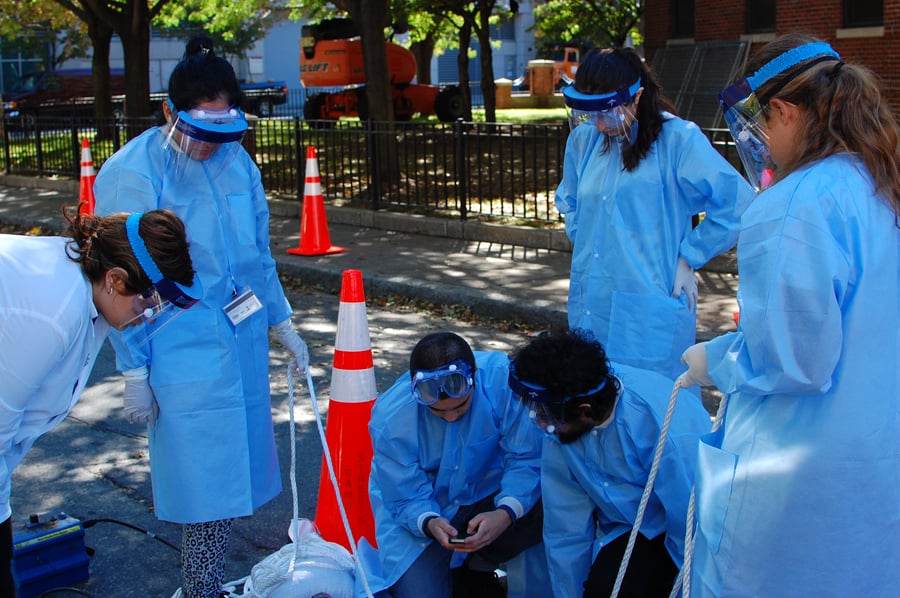
August 24, 2017
Could Sewage Sensors Help Us Address the Opioid Crisis?
A new start-up believes that wastewater analysis could empower cities to proactively tackle the opioid epidemic.

On January 18 of this year, officials in Berkeley County, West Virginia, asked emergency medical personnel to adopt a new technology on their daily shifts: an app to track how many opioid overdoses they attended each day. In the next two and a half months, the medics recorded 145 overdoses, of which 18 were fatal.
This count “underestimates the scale of the epidemic,” in the words of New Yorker writer Margaret Talbot, because it ignores all the overdoses that occur without a call to 911. But the count is more accurate than most. The majority of appless communities have only one metric at their disposal: opioid-related deaths.
Newsha Ghaeli, MIT researcher and cofounder of the start-up Biobot Labs, believes this data is too little, too late. Every day, more than 90 Americans die from an opioid overdose. The Centers for Disease Control and Prevention estimates that the U.S. spends about $78.5 billion in opioid-related costs annually. And yet the only information we have, in Ghaeli’s words, is “retroactive and stale.”
Ghaeli and Biobot Labs cofounder Mariana Matus are researchers on MIT’s Underworlds team, which sends sensor-equipped robots down manholes and into our sewage systems. With the microbial information collected from our wastewater, the group can essentially get a pretty accurate reading on the health of our neighborhoods by testing close to the source.
Ghaeli and Matus decided to launch their own company. Aware that their team’s research could be leveraged to provide answers to many public health questions, they wanted to limit their focus to just one. In speaking to multiple local and state officials, public health authorities, and local citizens, they found the opioid crisis emerged as a common concern.
At a recent event for DesignX, an MIT accelerator for city-focused start-ups, Ghaeli and Matus presented their plan (for which they won first prize): installing waste-gathering robots at various access points around a city and, every two weeks, generating data, like opioid consumption hot spots and the types of drugs consumed. They could also overlay this information with other data sets to measure the effectiveness of interventions or outreach methods. “Cities can begin to deploy different programs and monitor how they are curbing consumption,” adds Ghaeli, “without having to wait for annual overdose-death trends.”
It’s important to note that the roots of the opioid crisis are complex and spring from socioeconomic factors that can’t be evaluated from a wastewater bioassay. In her New Yorker piece, Talbot suggests contributing factors to the epidemic include jobs that cause physical pain, as well as conditions—such as poverty, joblessness, and post-traumatic stress disorder—that cause psychic pain. That said, however, Biobot Labs’ results can lead officials to ask important questions about the correlation between the opioid crisis and other macro-level factors.
Ghaeli and Matus are now on the hunt for the right cities to deploy their technology, where the crisis is seen “as a public health issue rather than purely a law enforcement issue,” with the hope that the takeaways can be applied to areas where the crisis has hit hardest.
If you liked this article, you may also enjoy “The ‘Sensing’ City Is the Future of Urbanism.”





